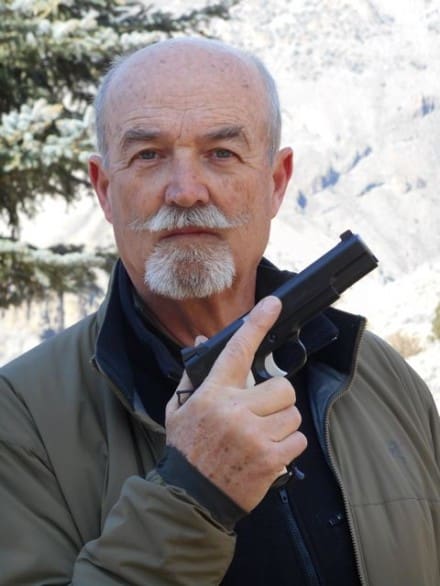It is of great interest that I note so many people that carry weapons for self defense choose their weapon and training on what they believe to be the ‘best case scenario’. Look at most law enforcement qualification courses. While some agencies have stepped up to the plate and made their ‘qualifications’ more realistic and difficult, most have designed the course of fire in the ‘qual’ to be one that Ray Charles could pass.
Likewise, look at how many CCW owners choose pistols that are easy to conceal and comfortable to carry. This often means small caliber pistols with often terrible sights, crappy triggers and very poor accuracy in their hands. They rationalize that if the need arises that they must defend themselves, the range will be so close that they can’t miss, their target will be standing still, and they will have all the time they need to present their handgun from concealment, and fire a carefully aimed accurate shot. Even the US Military is guilty of this mindset. With the exception of some Special Operations forces, most personnel fire small arms only once annually and often over courses that are totally unrealistic. The mindset of ‘Best Case Scenario’ continues to prevail in all these sectors.
If you have a choice, I highly recommend that you seek out training that will prepare you for the ‘Worse Case Scenario’. By doing so you will learn what you need to win and survive a lethal threat attack. You will also figure out, and if you have received quality training from your instructor, he will have shown you a number of skill drills to practice so you remain prepared for the moment when the ‘sh*t storm’ happens.
Lately, I have picked up on a number of students that think they must travel about in the USA ready for an ISIS attack in their neighborhood or local mall. For the most part they’re living a fantasy about whipping out their blaster and after 4 or 5 high capacity magazines saving the day. Be realistic in your needs; look at what the crime and danger elements are in your daily life. Once you have gained some basis for what you are likely to face, you can prepare for the task at hand. As I have tired to teach my students over the years, guns don’t win fights, it’s the guy behind the trigger that makes the difference. A cool, calm, skilled guy with a S&W Model 10 .38 spec will do far better that a panic stricken bozo with a Glock 17 and 33 round magazine.
Think about what your ‘Worse Case Senario’ might be. Seek out good training. PRACTICE. Have a plan. Don’t be the guy running around with his hair on fire when the sh*t hits the fan.
– Ken Hackathorn
Ken Hackathorn has served as a US Army Special Forces Small Arms Instructor, Gunsite Instructor, and NRA Police Firearms Instructor. He is currently an FBI Certified Firearms Instructor, Certified Deputy Sheriff with Washington County SO, Ohio, and a SRT member and Special Response Team trainer. Ken has trained US Military Special Operations forces, Marine FAST and SOTG units and is a contract small arms trainer to FBI SWAT and HRT.
Ken has provided training to Federal, State, and local law enforcement agencies and been active in small arms training for the past 25 years. He has written firearms related material for Guns & Ammo, Combat Handguns, Soldier Of Fortune, and currently American Handgunner and contributed to at least six other gun/shooting journals. Ken was also a founding member of IPSC and IDPA.
To see Ken’s Training Class Schedule visit aliastraining.com.
Gunfighter Moment is a weekly feature brought to you by Alias Training & Security Services. Each week Alias brings us a different Trainer and in turn they offer SSD readers hard earned words of wisdom.












































































































